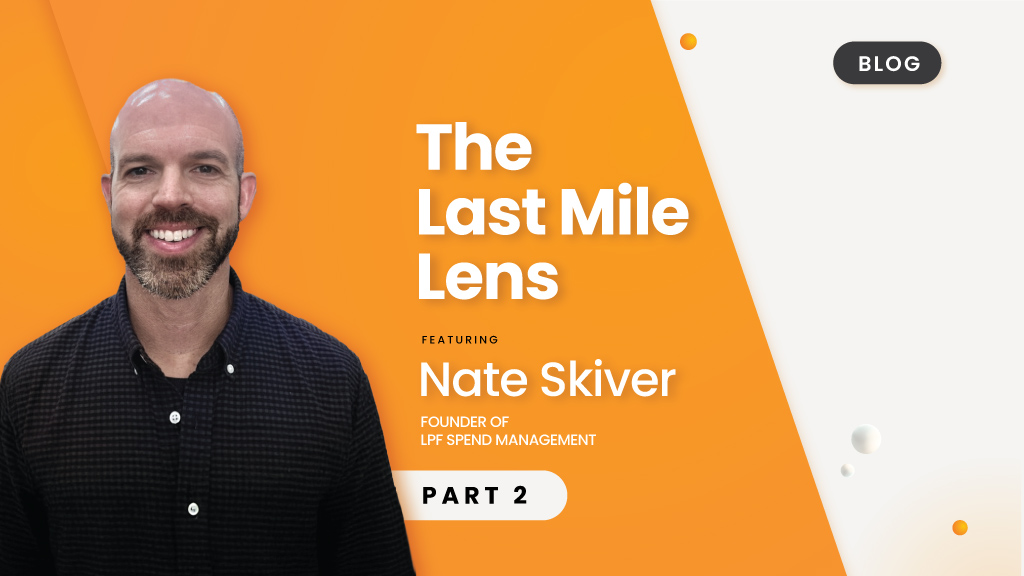The Last Mile Lens featuring Nate Skiver, Founder of LPF Spend Management – PART 2

Conversations with the leaders transforming e-commerce, logistics, and the supply chain.
Welcome back to The Last Mile Lens featuring an interview with Nate Skiver, founder of LPF Spend Management. In part two of our conversation, Nate explores how brands can better integrate logistics into the customer journey, avoid missed loyalty opportunities, and prepare for peak season with the right partners.
Logistics used to be seen as a back-end function, but now customers experience it as part of the full-brand experience. What are some practical ways brand leaders can better weave logistics into the customer journey?
Nate: It starts with gaining internal alignment to make delivery a true priority. Often, I hear brands say delivery is important, but their checkout shows generic “3-5 business days” with no estimated delivery date. That doesn’t reflect delivery being vital to the customer experience.
Now prioritizing delivery looks different for every brand, which means delivery doesn’t have to be fast or free or both, but it does have to be something brand leaders agree upon. Once they’re aligned, functional teams can work together to build and execute the plan.
Are there particular logistics touchpoints (like delivery notifications, unboxing, or returns) where retailers are still missing opportunities to build stronger loyalty?
Nate: The biggest missed opportunity is providing a precise, customized estimated delivery date, then hitting it with a high degree of reliability. That should be table stakes, but that’s not necessarily the case for all brands. Yes, there is some complexity to it based on a brand’s fulfillment network and inventory, but plenty of companies have solved for this.
When brands set a clear delivery promise — ideally as early as when a customer is browsing the product page, but at least at checkout — and then meet it, brands build trust and loyalty.
When carriers make similar promises, how can brands effectively evaluate their options?
Nate: Evaluating carrier options requires work and due diligence. Brands should do their own research, talk with peers and, yes, hire a consultant. Ultimately though, they have to be open to testing and learning.
Brands should build a process for testing delivery solutions through which they can identify gaps in speed, cost, or reliability. They can then choose a solution and test it. If it meets expectations, move forward. If not, move on. It’s simple, but requires planning and that’s often where brands stop short.
So, what’s standing in their way?
Nate: It’s a mix of factors. Some of it is resources and expertise, but a lot is psychological. It’s a fear of change or a reluctance to take risks, but many risks are more perceived than real.
Companies may explore alternatives lightly, but if it drops on the priority list or doesn’t deliver immediate results, they stop instead of following through. That’s changing, but the combination of limited bandwidth, lack of know-how, and fear of change still holds many brands back.
Alright, one last question for you, Nate. As brands are preparing for peak season, what factors should they prioritize in choosing the right partners?
Nate: For peak season, trust and reliability matter more than anything. But adding new carriers right before peak is risky and usually unrealistic. For a delivery partner to succeed in a volatile, high-volume time, brands need to plan ahead and test solutions well before volume spikes.
Brands need to remember that delivery evaluation isn’t a once-a-year exercise. It’s not one and done. It’s a continuous cycle of assessing, testing, implementing, measuring and repeating.
Check back in for more conversations with the leaders shaping the future of e-commerce, technology, logistics, and supply chain. Want to learn more about UniUni’s last-mile delivery offerings? Reach out to us at hello@uniuni.com.